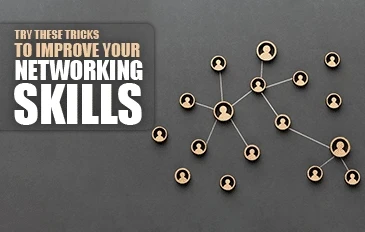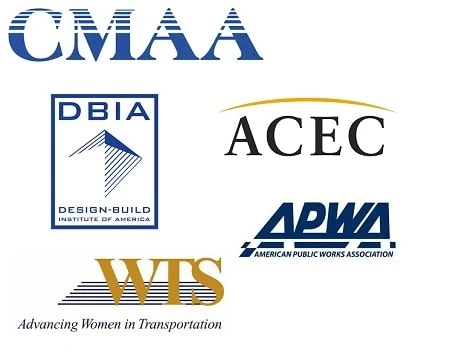Try These Seven Tricks to Improve Your Networking Skills

Try These Seven Tricks to Improve Your Networking Skills
Networking is one of the most important aspects of a successful career, but it can also be one of the most intimidating. For most people, the thought of walking into a room full of strangers and trying to make connections is overwhelming. But, like anything else, it can be learned and improved on with practice. These tricks will help you get started.
Do Your Research in Advance
The best way to feel confident is to know what you’re hoping to achieve. Before attending a networking event, take some time to learn about the people who’ll be in attendance—read their biographies, any articles they’ve written, and some information about their business, and consider what exactly you can offer them. This research will give you a better sense of who you might want to talk to and what topics might spark their interest. It’ll also help you come up with conversation starters, focus on your goals for the event, and make a good impression. Review your elevator pitch so you’re prepared to introduce yourself confidently.
Arrive Early
Environmental cues can greatly impact our mood and behavior, so it’s important to be mindful of the messages you send with your body language when you’re networking. Arriving early at an event is a great way to show interest and enthusiasm. It gives you the opportunity to scope out the room, chat with other attendees before the event gets too crowded, and get a feel for the atmosphere; it can also help you avoid the awkwardness of being one of the last people to arrive.
Be an Active Listener
One of the most effective networking skills is active listening. Listen attentively to what the other person is saying. Show genuine interest in their work and experiences. The best way to build rapport with someone is to ask them questions about their job and hobbies: not only does this make conversations more interesting, it also shows the other person that you’d like to get to know them better. People are more likely to remember you if they feel like you truly listened to them and invested in the conversation. Take the initiative and be friendly and engaging. Smile, make eye contact and exude positive energy.
Dress for Success
You never get a second chance to make a first impression, so it’s important to dress for the occasion. Choose an outfit that’s both stylish and professional, and that makes you feel confident. It’s also important to pay attention to your grooming, so ensure your hair is styled. If you wear makeup, make sure it’s minimal; you want people to focus on your conversation, not your appearance. Finally, avoid wearing strong fragrances, as some people may be allergic or dislike the smell. You’ll feel more confident when you look your best and can make a better impression on potential contacts.
Bring Plenty of Business Cards
Even if you aren’t seeking new business contacts, always bring business cards so people can be reminded of your conversation after they leave the event. And don’t forget to personalize them with something unique about yourself. Business cards are an excellent way to leave a lasting impression and can be a valuable tool for developing meaningful engineering relationships. They’re also an easy way to exchange contact information and can help people remember who you are and what you do. So before heading out to that event, make sure you have plenty of business cards with you. That way, you’ll be prepared to make new contacts and easily hand out your information. By staying connected with the people you meet, you can build strong relationships that can lead to your career advancement.
Start Small
Another effective approach to improving your skills is to start small. Rather than trying to approach everyone in the room at once, start by talking to one or two people who interest you. This will give you a chance to practice your conversation starters and help you feel more comfortable talking to new people. It’ll also make networking less overwhelming and allow you to focus on building relationships rather than collecting contacts. Once you’ve mastered the art of conversation starters, you can start approaching larger groups of people with confidence.
Follow-Up After the Event
After attending a networking event, it’s important to follow up with the people you meet. You can do this by sending a quick email or LinkedIn message. Mention something you talked about in conversation and invite them to keep in touch. Following up shows that you’re interested in developing a relationship, which may even lead to a future opportunity.
Conclusion
If you’re not a natural networker, never fear. These tips and tricks can help anyone to become a skilled networker. The most important thing is to get started and to keep working at it. The more practice you have, the more confident you’ll become. And who knows? Over time, you might even come to enjoy networking. So go out there and start meeting people—you never know who you’ll meet, or where your next opportunity will come from.
Michael DeSafey is a leading executive recruiter for professionals in the construction, engineering, and environmental industries. He is currently the President of Webuild Staffing: www.webuildstaffing.com. To learn more about Michael, or to follow his blog, please visit www.michaeldesafey.com.
How LinkedIn Can Contribute to your Career Success

How LinkedIn Can Contribute to your Career Success
How LinkedIn Can Contribute to your Career Success in the Construction, Engineering and Environmental Industries
LinkedIn is one of the oldest social media sites still in operation today. Founded in December of 2002 the platform has grown considerably over the years – unlike the numerous ones which have ultimately disappeared in that amount of time.
According to Top Dog Social Media, over 84 million people use LinkedIn in the United States alone. To put this in proper perspective, this is around 27% of the entire population. But LinkedIn is not your average social media platform.
Instead of catering towards typical social interactions, LinkedIn was developed to help
business professionals network and build profiles which are essentially online, living resumes.
Being on LinkedIn is an important step for individuals hoping to continue growing and nurturing their career paths in the construction, engineering, and environmental industries. Here we discuss why.
Building Your Network
With so many professionals on LinkedIn, the site is the perfect medium for building your network of industry professionals. Other users even have the ability to endorse the skills you’ve listed on your profile, which is essentially verification you can actually perform the way you state.
A good network can open up a world of opportunities for those serious about their careers. It can assist in getting new jobs or promotions and allow you to keep up to date on the latest industry trends, such as:
- What does the future cost projections on materials look like?
- What are the newest technologies or trends to hit these industries?
- What environmental issues are currently occurring throughout the world?
Living Resume
The term “living resume” means the information on your LinkedIn profile can be constantly updated or added to so everything is as current as possible.
It is for this reason that so many hiring managers have taken to using these profiles in their process. A person who submitted their resume for consideration three months ago may have new skills or education relevant to that position.
To properly leverage this, however, you must keep the profile as current as possible. When you receive a new certification, get a degree, or complete a related project you should list it on your LinkedIn profile within 48 hours of completion.
Allowing your profile to grow stale will hamper your career growth. This is especially true in all careers in the construction, engineering, and environmental industries where staying current is vital to both safety and efficiency.
Promote Yourself
LinkedIn is the perfect catalyst for professional promotion efforts. You can share your profile to other social sites, including blogs or websites. Your profile will also show up in search engine results, which can then be seen by employers searching for professionals in your industry.
All your professional information is at the fingertips of everyone – which is a solid asset in building a solid career. Your achievements, certifications, education, previous projects, cover letter, and links proving what you’ve stated are all featured on your page. Providing this information publicly allows you to appear transparent, trustworthy, and confident.
Get Hired
LinkedIn is one of the best ways for industry professionals to get hired. Your profile gives the option of stating you are open to offers, actively seeking a new job, or not open to any offers currently. Employers or hiring managers can search for professionals seeking employment by industry and desired skills.
While anyone can submit their resumes to specific jobs, using LinkedIn as a method of getting hired is a step above the rest. This is thanks to the fact that limited work is necessary on your own behalf. Simply keep your profile updated and continue advancing your qualifications to have job offers start coming to you.
Michael DeSafey is a leading executive recruiter for professionals in the construction, engineering and environmental industries. He is currently the President of Webuild Staffing www.webuildstaffing.com . To learn more about Michael or to follow his blog please visit www.michaeldesafey.com
Networking for Success: Top Professional Organizations for Construction Managers

Networking for Success: Top Professional Organizations for Construction Managers
The combination of advocacy, education and certification makes CMAA the premiere organization for Construction Management professionals.
American Council of Engineering Companies (ACEC) – ACEC advocates for the entire industry on a state and national level. Many, if not most, civil engineering firms have a CM arm, so there is great value for Construction Managers in this organization.
Local chapters offer excellent networking and monthly luncheon meetings provide insight into the market and are a great venue for forging and strengthening relationships. The entire spectrum of the industry is represented at ACEC meetings.
Design Build Institute of America promotes and educates the industry and owners in the best practices for implementation of design build, P3 and IPD. Although many Construction Management professionals struggle to identify their proper role on the construction team, the owner’s representative role is still necessary. The more thoroughly the CM understands the DB process, the more effectively the owner’s interests can be protected.
American Public Works Association (APWA) – Municipal public works departments are represented at the state and national level by the APWA. Membership is open to all industry-related firms.
As budgets tighten and staffs shrink, many municipalities are taking advantage of Construction Managers to act as owner’s representative during the construction of capital projects. APWA is a great organization for networking and learning about issues from the owner’s point of view.
Women’s Transportation Seminar (WTS) is an international organization that focuses on regional, and state transportation agencies. Membership is open to the entire A/E/C industry. While the core principles of the organization are to advance women in the transportation industry, men are welcome and comprise a large percentage of the membership.
Many transportation agencies contract the management and oversight of capital project construction to CM firms. WTS is the best venue in which to meet the owners, learn about the projects and form the relationships necessary to win this work.
The Construction Management field is constantly changing and expanding. When you are ready for the next level in your career contact Webuild staffing. They work with a large group of industry leaders who are interested in hiring quality Construction Management professionals.
Michael DeSafey is a leading executive recruiter for professionals in the construction, engineering and environmental industries. He is currently the President of Webuild Staffing www.webuildstaffing.com . To learn more about Michael or to follow his blog please visit www.michaeldesafey.com
